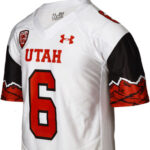Military uniforms are more than just clothing; they are powerful symbols of identity, cohesion, and discipline within armed forces. For those in service, uniforms act as a visual language, instantly communicating rank, service history, specialization, and honors. Beyond communication, uniforms serve practical roles, facilitating quick identification of authority in diverse scenarios, from routine operations to critical combat situations.
The array of military uniforms can seem extensive, varying across service branches, seasons, genders, and occasions. The reality is a vast spectrum of uniform variations exists throughout the military, a depth of information that goes beyond a simple overview.
While service members undergo rigorous training to master uniform regulations, a foundational understanding can be invaluable for friends, family, and anyone interested in grasping military structure and heritage. This guide will explore the primary categories of military uniforms and highlight key differences.
Decoding the Categories: Combat, Service, and Dress Uniforms
Military uniforms are broadly categorized into three main types, each designed for specific functions and contexts: combat, service, and dress uniforms.
Combat Uniforms: Functionality and Practicality in the Field
Combat uniforms, often referred to as “working” uniforms, prioritize functionality, durability, and ease of movement. Constructed from robust materials, they typically consist of a tunic or jacket, trousers, a t-shirt, a protective head covering, and sturdy boots. These uniforms are characterized by camouflage patterns in green or tan hues, designed for operational environments.
While primarily worn in combat scenarios, combat uniforms are also commonly used for daily tasks on military installations and in non-combat settings. Insignia indicating rank are present but are intentionally subdued to maintain operational effectiveness and soldier safety.
Alt text: A soldier wearing a camouflage combat uniform in a field environment, demonstrating the practical design and muted insignia.
Service Uniforms: Projecting Professionalism in Everyday Duty
Service uniforms are the standard “everyday” attire for military personnel. These uniforms, typically in colors like green, white, blue, or khaki, present a professional appearance akin to business dress. They include a button-up shirt, trousers or a skirt, dress shoes, and a formal head cover.
Designed for office environments and interactions with the public, service uniforms emphasize professionalism and decorum. Insignia denoting rank are prominently displayed for clear identification. Service members may also wear “awards” or “decorations,” small ribbons above the right breast pocket, signifying specific achievements and qualifications.
Alt text: A close-up display of a service uniform showcasing the crisp fabric, button-up shirt, prominent rank insignia on the shoulders, and award ribbons above the pocket.
Dress Uniforms: Formality and Tradition for Special Occasions
Dress uniforms represent the most formal category, reserved for ceremonial events, official functions, and occasions demanding the highest standards of presentation. These uniforms are often more elaborate and may include a formal jacket or jumper, trousers or a skirt, a dress cover, and polished dress shoes.
Dress uniforms, sometimes called “mess” uniforms, are available in colors such as white, blue, green, or black, depending on the branch and specific event formality. Insignia, awards, decorations, and medals are displayed prominently, reflecting the service member’s achievements and the solemnity of the occasion.
Alt text: Military personnel in full dress uniforms participating in a formal ceremony, highlighting the elaborate designs, polished appearance, and prominent display of insignia and medals.
Branch-Specific Uniform Variations
While the basic categories of combat, service, and dress uniforms are consistent across the US military, significant differences exist between the uniforms of each service branch. To the untrained observer, distinguishing between branches at a glance might seem challenging initially. However, each branch has distinct uniform styles, colors, and insignia that, upon closer inspection, clearly define a service member’s affiliation.
These variations in uniform design are deeply rooted in the history, traditions, and operational environments of each branch, contributing to the unique identity and pride of service within the Army, Navy, Air Force, Marine Corps, and Coast Guard. Understanding these “Military Uniform Differences” provides valuable insight into the diverse world of military service.


